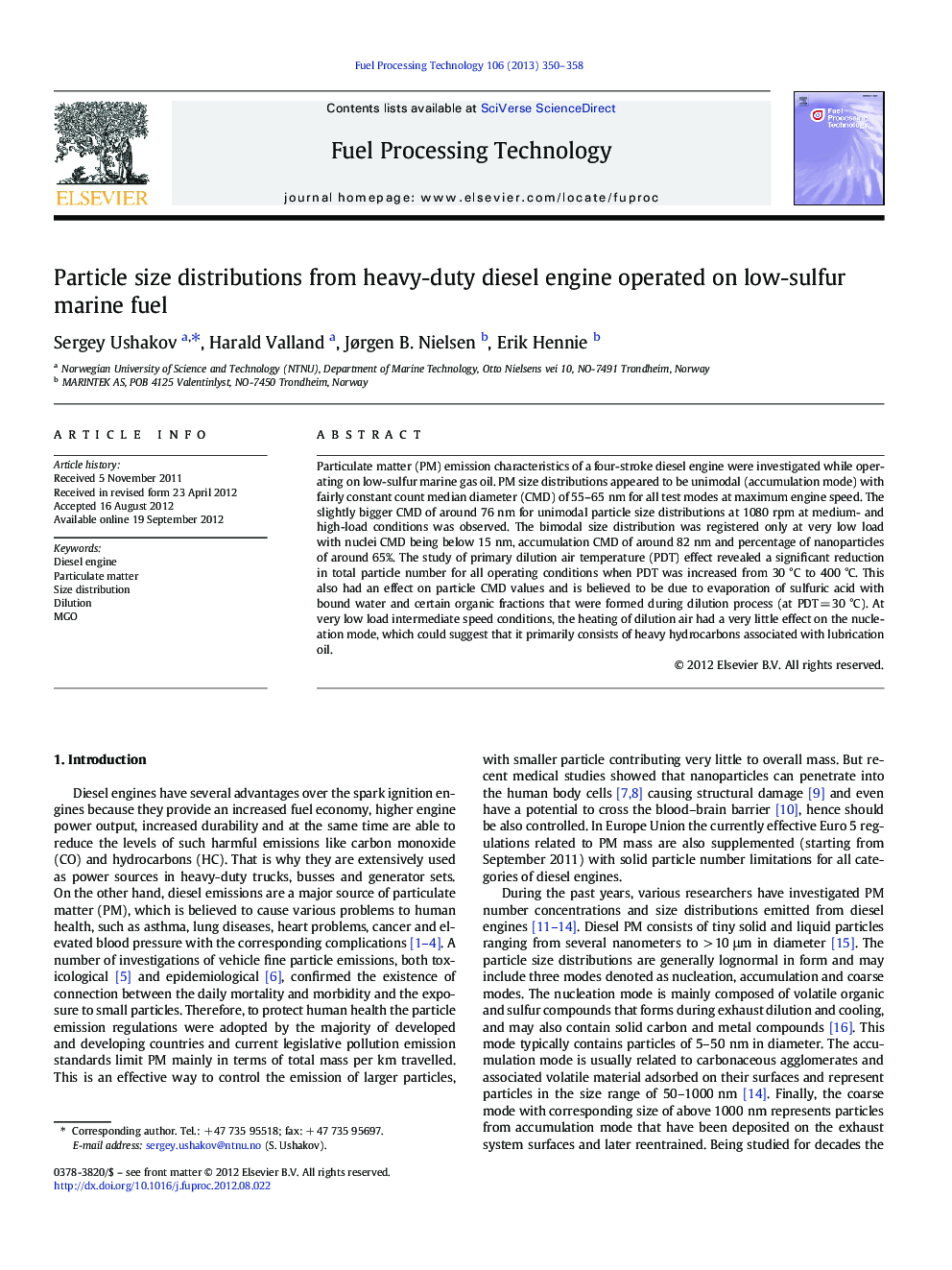| Article ID | Journal | Published Year | Pages | File Type |
|---|---|---|---|---|
| 210073 | Fuel Processing Technology | 2013 | 9 Pages |
Particulate matter (PM) emission characteristics of a four-stroke diesel engine were investigated while operating on low-sulfur marine gas oil. PM size distributions appeared to be unimodal (accumulation mode) with fairly constant count median diameter (CMD) of 55–65 nm for all test modes at maximum engine speed. The slightly bigger CMD of around 76 nm for unimodal particle size distributions at 1080 rpm at medium- and high-load conditions was observed. The bimodal size distribution was registered only at very low load with nuclei CMD being below 15 nm, accumulation CMD of around 82 nm and percentage of nanoparticles of around 65%. The study of primary dilution air temperature (PDT) effect revealed a significant reduction in total particle number for all operating conditions when PDT was increased from 30 °C to 400 °C. This also had an effect on particle CMD values and is believed to be due to evaporation of sulfuric acid with bound water and certain organic fractions that were formed during dilution process (at PDT = 30 °C). At very low load intermediate speed conditions, the heating of dilution air had a very little effect on the nucleation mode, which could suggest that it primarily consists of heavy hydrocarbons associated with lubrication oil.
► PM number distributions from a diesel engine operated on MGO fuel were studied. ► Particulate matter mass is found to increase with load. ► The number distributions are unimodal with the only exception of low loads. ► Primary dilution temperature showed pronounced effect on mass and total PM number. ► Sulfur and non-volatile compounds of fuel and lube oil strongly affect PM emissions.
